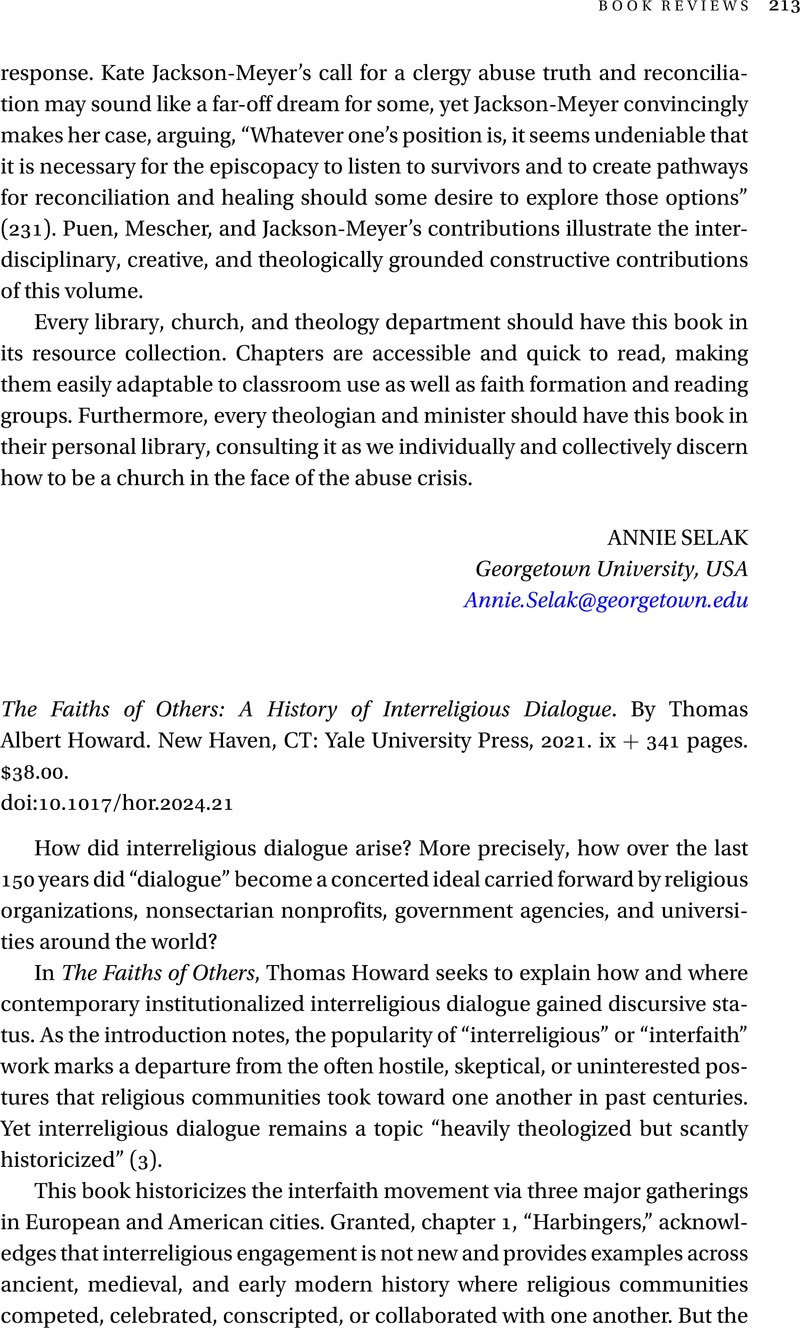No CrossRef data available.
The Faiths of Others: A History of Interreligious Dialogue. By Thomas Albert Howard. New Haven, CT: Yale University Press, 2021. ix + 341 pages. $38.00.
Review products
The Faiths of Others: A History of Interreligious Dialogue. By Thomas Albert Howard. New Haven, CT: Yale University Press, 2021. ix + 341 pages. $38.00.
Published online by Cambridge University Press: 29 May 2024
Abstract
An abstract is not available for this content so a preview has been provided. Please use the Get access link above for information on how to access this content.

Information
- Type
- Book Review
- Information
- Copyright
- © College Theology Society 2024


